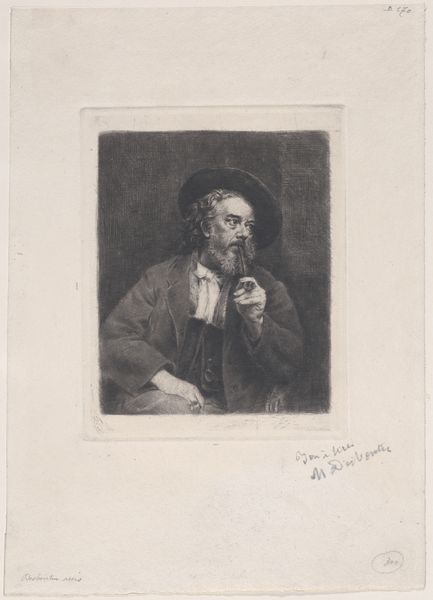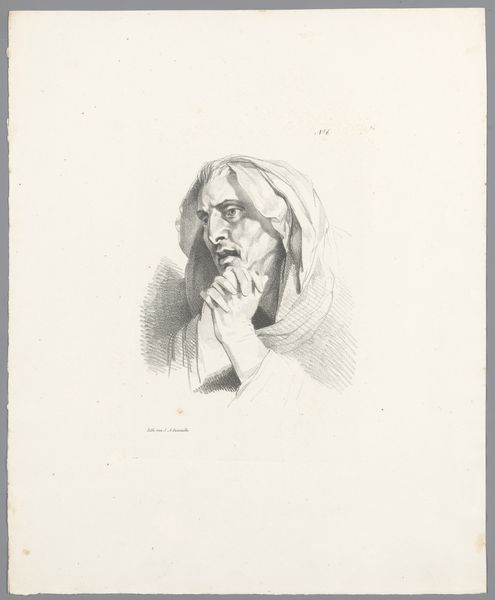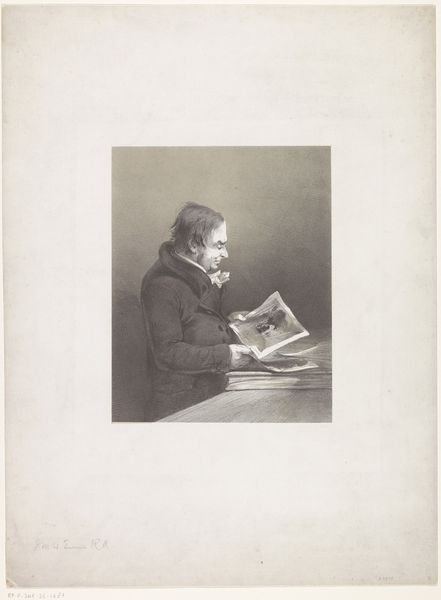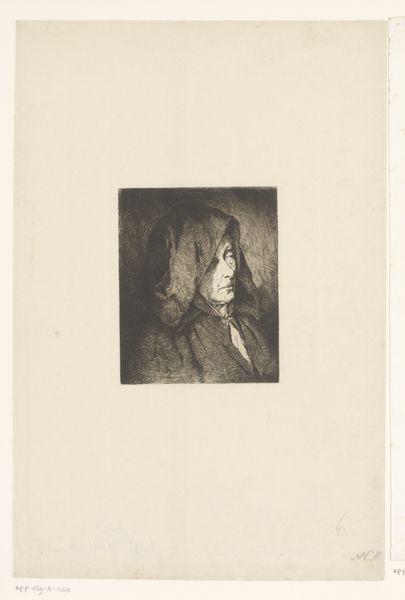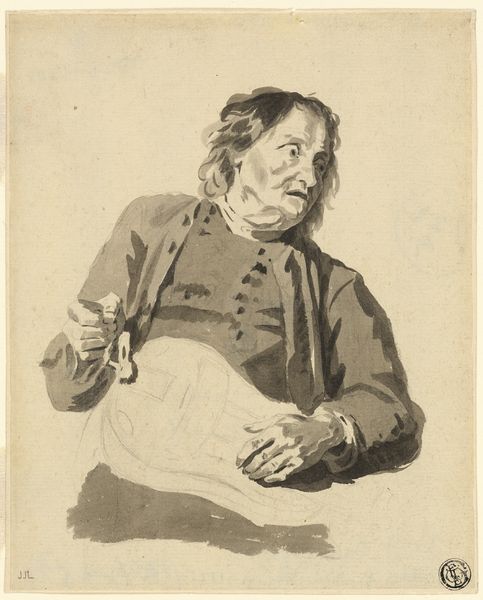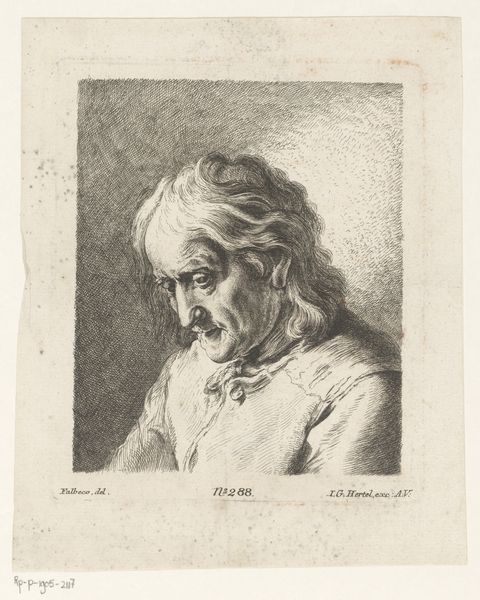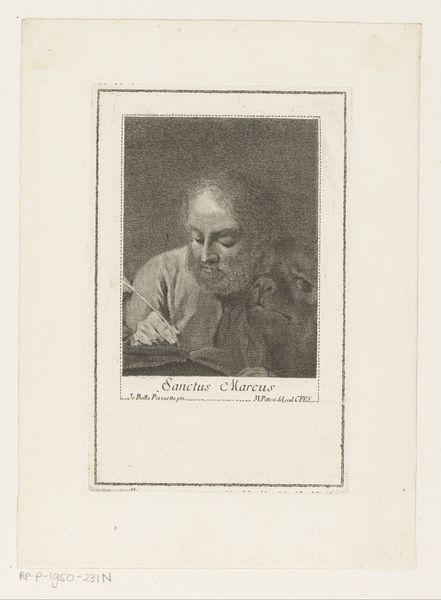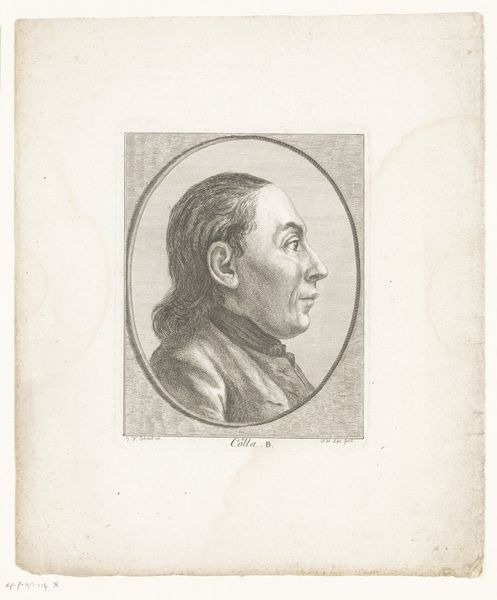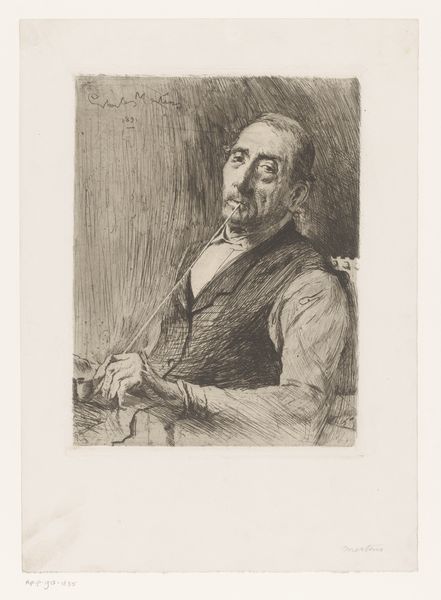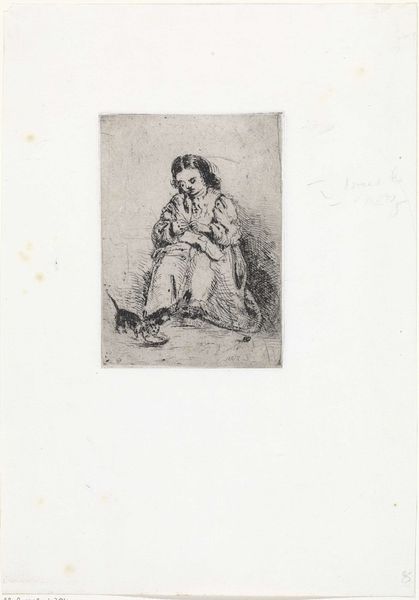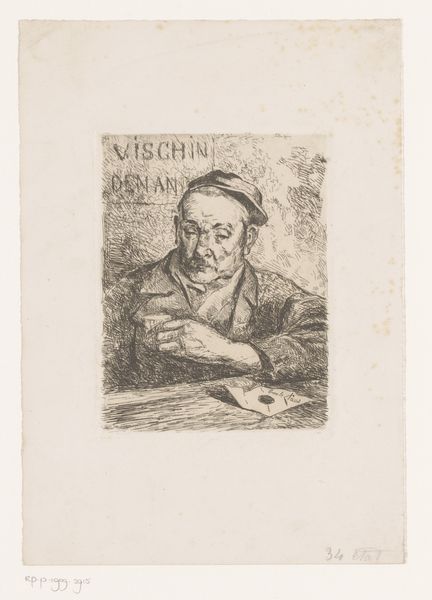
engraving
#
portrait
#
neoclacissism
#
old engraving style
#
pencil drawing
#
19th century
#
history-painting
#
engraving
#
realism
Dimensions: height 225 mm, width 164 mm
Copyright: Rijks Museum: Open Domain
Curator: Before us we have "Oude man in denkende houding", or "Old Man in a Thinking Pose," an engraving created sometime between 1805 and 1844 and attributed to Ignace-Joseph de Claussin. Editor: Immediately, there's a melancholic quality to the image. The shading is dense, and the posture suggests deep contemplation, or perhaps resignation. Curator: Yes, observe the skillful use of line to define the contours of his face and the folds of his garment. The textures are achieved through meticulous cross-hatching, a hallmark of engraving. Also note the subtle shift in tone from light to shadow; a masterclass in value contrast. Editor: Indeed, but the impact is arguably psychological, rather than merely technical. The 19th century, of course, experienced rapid societal shifts, leading to widespread social alienation, that's echoed, perhaps, in the introspective posture and solitary nature of the subject in de Claussin's rendering. Was he documenting a pervasive sense of displacement among Europe's aging male population, do you suppose? Curator: The artist has captured a particular realism. And, yet, there's a level of idealization too, drawing upon neoclassicist tropes even when depicting a man in apparent distress. The very careful shading of his wrinkled features doesn't appear documentary. Editor: Right. Given the political climate, the old man may have represented the disenfranchised intellectual, the powerless member of the French third estate; or it may reference to changing family dynamics under the newly emerging class structures in Dutch society. Curator: Perhaps. Either way, the image provides a striking case study for scholars examining representations of aging and social class. Editor: I see now how it merges aesthetic consideration and complex subject matter, creating space for ongoing scholarly evaluation, just as you describe it. Curator: And, I think our visitors can also connect with the artwork, relating to universal aspects of contemplation, aging, and possibly regret in the subject's stance.
Comments
No comments
Be the first to comment and join the conversation on the ultimate creative platform.

